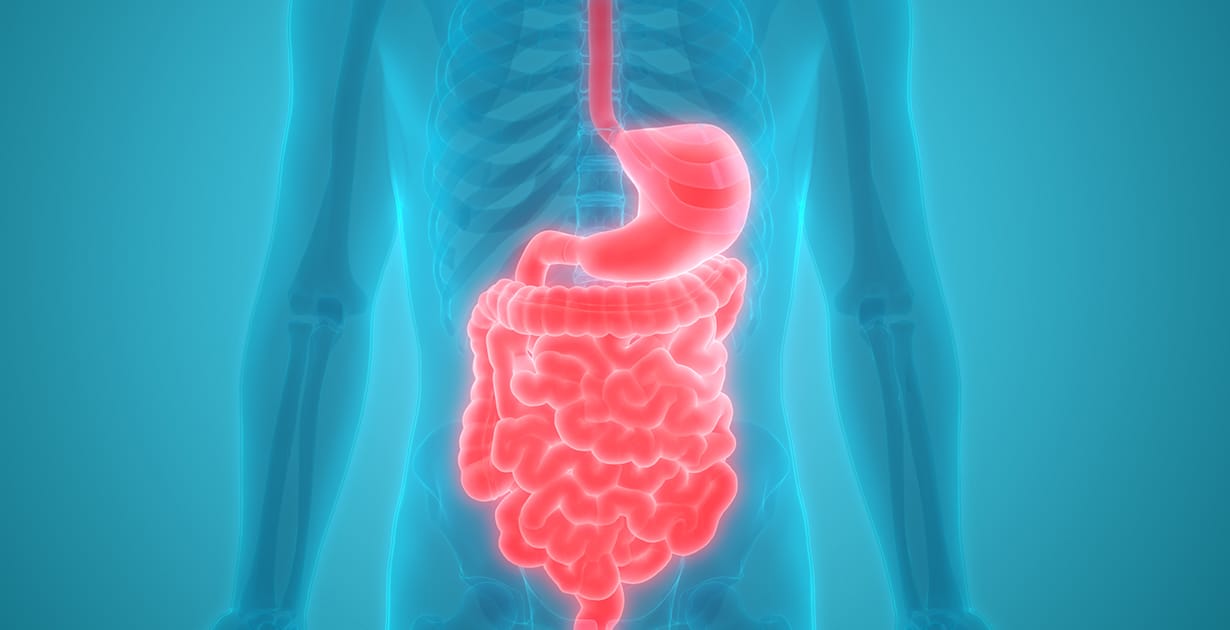
Amylase is a fascinating enzyme that plays a crucial role in our digestive system. Found in saliva and the pancreas, it helps break down carbohydrates into simple sugars, making it easier for our bodies to absorb nutrients. But did you know that amylase isn't just important for humans? It's also used in various industries, from brewing beer to producing biofuels. This enzyme has a rich history and a wide range of applications that might surprise you. In this blog post, we'll uncover 50 intriguing facts about amylase, shedding light on its importance, functions, and the many ways it impacts our daily lives.
What is Amylase?
Amylase is an enzyme that plays a crucial role in the digestion of carbohydrates. It breaks down starches into sugars, making them easier for the body to absorb. This enzyme is found in both humans and animals, and even in some plants and bacteria.
-
Amylase is produced in the pancreas and salivary glands. These organs release amylase into the digestive tract to help break down food.
-
There are three types of amylase: alpha, beta, and gamma. Each type has a specific function and location in the body.
-
Alpha-amylase is the most common type in humans. It is found in saliva and pancreatic juice.
-
Beta-amylase is found in plants and bacteria. This type helps in the breakdown of starches during the process of germination in seeds.
-
Gamma-amylase works best in acidic environments. It is less common but still plays a role in breaking down carbohydrates.
How Does Amylase Work?
Understanding how amylase functions can give insight into its importance in our digestive system. This enzyme speeds up the chemical reactions that break down complex carbohydrates.
-
Amylase breaks down starch into maltose. Maltose is a simpler sugar that can be further broken down into glucose.
-
The enzyme works by hydrolyzing glycosidic bonds. These bonds hold the sugar molecules together in starch.
-
Amylase activity begins in the mouth. Salivary amylase starts breaking down food as soon as you begin chewing.
-
Pancreatic amylase continues the process in the small intestine. This ensures that carbohydrates are fully broken down and absorbed.
-
Amylase works best at a specific pH. For salivary amylase, the optimal pH is around 6.7-7.0, while pancreatic amylase works best at a pH of 7.1-7.5.
Importance of Amylase in Digestion
Amylase is essential for proper digestion and nutrient absorption. Without it, our bodies would struggle to break down and utilize carbohydrates.
-
Amylase deficiency can lead to digestive problems. Symptoms may include bloating, gas, and diarrhea.
-
Amylase levels can be measured through blood tests. These tests help diagnose conditions like pancreatitis or other digestive disorders.
-
High amylase levels can indicate pancreatic inflammation. This condition is known as pancreatitis and requires medical attention.
-
Low amylase levels can be a sign of chronic pancreatitis. This condition can lead to long-term digestive issues.
-
Amylase supplements are available for those with deficiencies. These supplements can help improve digestion and nutrient absorption.
Amylase in Different Organisms
Amylase is not unique to humans; it is found in various organisms, each with its own specific function and importance.
-
Plants use beta-amylase during seed germination. This enzyme helps convert stored starches into sugars for the growing plant.
-
Bacteria produce amylase to break down environmental starches. This allows them to utilize these sugars as a food source.
-
Fungi also produce amylase. This helps them decompose organic matter in their environment.
-
Amylase is used in the brewing industry. It helps break down starches in grains to produce fermentable sugars.
-
In animals, amylase is crucial for digesting plant material. Herbivores rely heavily on this enzyme to break down their carbohydrate-rich diets.
Industrial Uses of Amylase
Beyond its biological role, amylase has several industrial applications. Its ability to break down starches makes it valuable in various fields.
-
Amylase is used in the textile industry. It helps remove starch-based sizing agents from fabrics.
-
The enzyme is also used in paper manufacturing. It breaks down starches used in paper coatings, improving quality.
-
Amylase is a key ingredient in laundry detergents. It helps break down starch-based stains on clothing.
-
In the food industry, amylase is used to produce high-fructose corn syrup. This sweetener is made by breaking down corn starch into simpler sugars.
-
Amylase is used in the production of ethanol. It breaks down starches in grains, making them fermentable for ethanol production.
Health and Medical Applications
Amylase has several health and medical applications, from diagnostic tests to therapeutic uses.
-
Amylase levels are used to diagnose acute pancreatitis. Elevated levels can indicate this condition.
-
The enzyme is used in some digestive aids. These supplements help people with enzyme deficiencies.
-
Amylase inhibitors are being studied for diabetes treatment. These inhibitors could help control blood sugar levels by slowing carbohydrate digestion.
-
Amylase is used in some wound care products. It helps break down dead tissue, promoting healing.
-
Research is ongoing into the role of amylase in cancer. Some studies suggest that amylase levels could be a marker for certain types of cancer.
Fun Facts About Amylase
Amylase has some interesting and lesser-known facts that highlight its versatility and importance.
-
Amylase was one of the first enzymes to be discovered. It was identified in the 19th century by French chemist Anselme Payen.
-
The enzyme is named after the Greek word for starch, "amylon." This reflects its primary function of breaking down starches.
-
Amylase can be found in saliva, making it easy to test. Simple tests can measure amylase activity in saliva samples.
-
Some people have higher salivary amylase levels than others. This variation can affect how quickly they digest carbohydrates.
-
Amylase activity can be affected by diet. High-carbohydrate diets can increase amylase production.
Amylase in Everyday Life
Amylase plays a role in many everyday activities, from eating to cleaning.
-
Chewing gum can stimulate amylase production. This helps start the digestion process even before swallowing.
-
Cooking can affect amylase activity. High temperatures can denature the enzyme, reducing its effectiveness.
-
Amylase is used in some pet foods. It helps improve the digestibility of carbohydrates for pets.
-
The enzyme is also used in some baby foods. It helps break down starches, making the food easier for infants to digest.
-
Amylase is present in some probiotic supplements. These supplements aim to improve digestive health by enhancing enzyme activity.
Amylase and Evolution
The evolution of amylase provides insights into how organisms have adapted to their environments.
-
Humans have more copies of the amylase gene than some other primates. This suggests an evolutionary adaptation to a starch-rich diet.
-
The enzyme has evolved to work at different pH levels. This allows it to function in various parts of the digestive system.
-
Amylase gene duplication is common in herbivores. This adaptation helps them digest their plant-based diets more efficiently.
-
Some insects produce amylase to digest plant material. This allows them to utilize a wide range of food sources.
-
Amylase activity can be influenced by environmental factors. Temperature, pH, and diet can all affect enzyme production and activity.
Future Research on Amylase
Ongoing research continues to uncover new aspects of amylase and its potential applications.
-
Scientists are exploring the use of amylase in biofuel production. The enzyme could help break down plant materials more efficiently.
-
Research is being conducted on amylase inhibitors for weight loss. These inhibitors could help reduce calorie absorption from carbohydrates.
-
Amylase is being studied for its role in oral health. The enzyme could help break down food particles, reducing plaque formation.
-
New amylase variants are being engineered for industrial use. These variants could be more efficient or stable under different conditions.
-
The enzyme's role in gut health is a growing area of research. Understanding how amylase interacts with gut bacteria could lead to new treatments for digestive disorders.
The Final Scoop on Amylase
Amylase plays a crucial role in breaking down carbohydrates into simple sugars, making digestion smoother. Found in saliva and the pancreas, this enzyme is essential for energy production. Without it, our bodies would struggle to process starchy foods like bread, potatoes, and rice.
Interestingly, amylase levels can indicate various health conditions. High levels might suggest pancreatitis or other pancreatic issues, while low levels could point to chronic pancreatitis or liver disease. Monitoring these levels helps in diagnosing and managing such conditions.
In the food industry, amylase is a game-changer. It’s used in baking to improve dough quality and in brewing to convert starches into fermentable sugars. This enzyme’s versatility extends beyond our bodies, proving its importance in everyday life.
Understanding amylase gives us insight into both our health and the food we consume. It’s a small enzyme with a big impact.
Was this page helpful?
Our commitment to delivering trustworthy and engaging content is at the heart of what we do. Each fact on our site is contributed by real users like you, bringing a wealth of diverse insights and information. To ensure the highest standards of accuracy and reliability, our dedicated editors meticulously review each submission. This process guarantees that the facts we share are not only fascinating but also credible. Trust in our commitment to quality and authenticity as you explore and learn with us.


